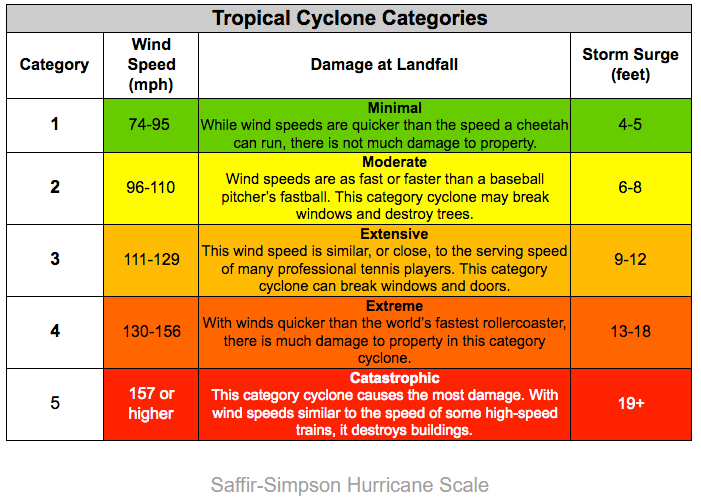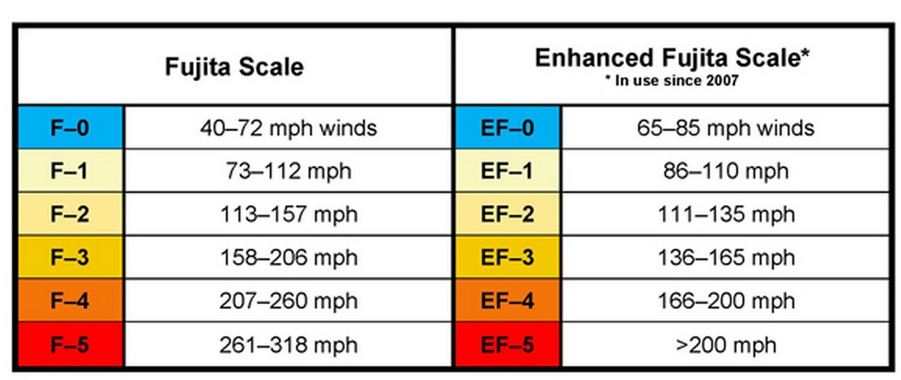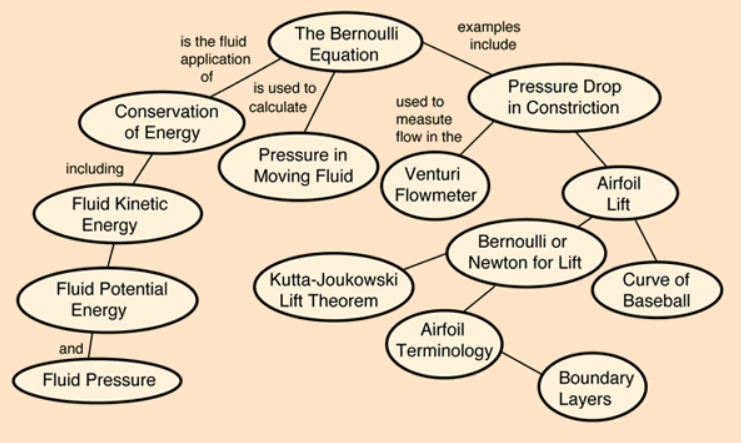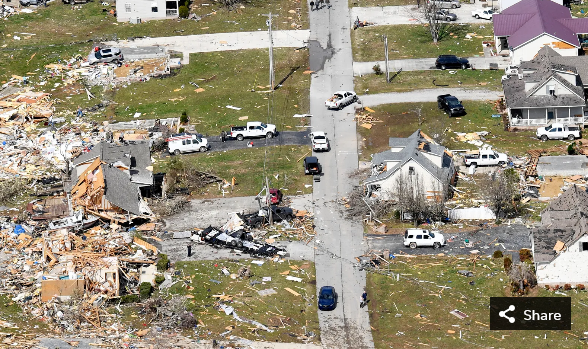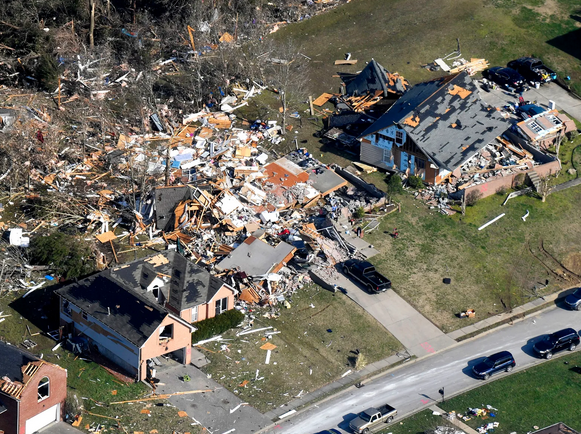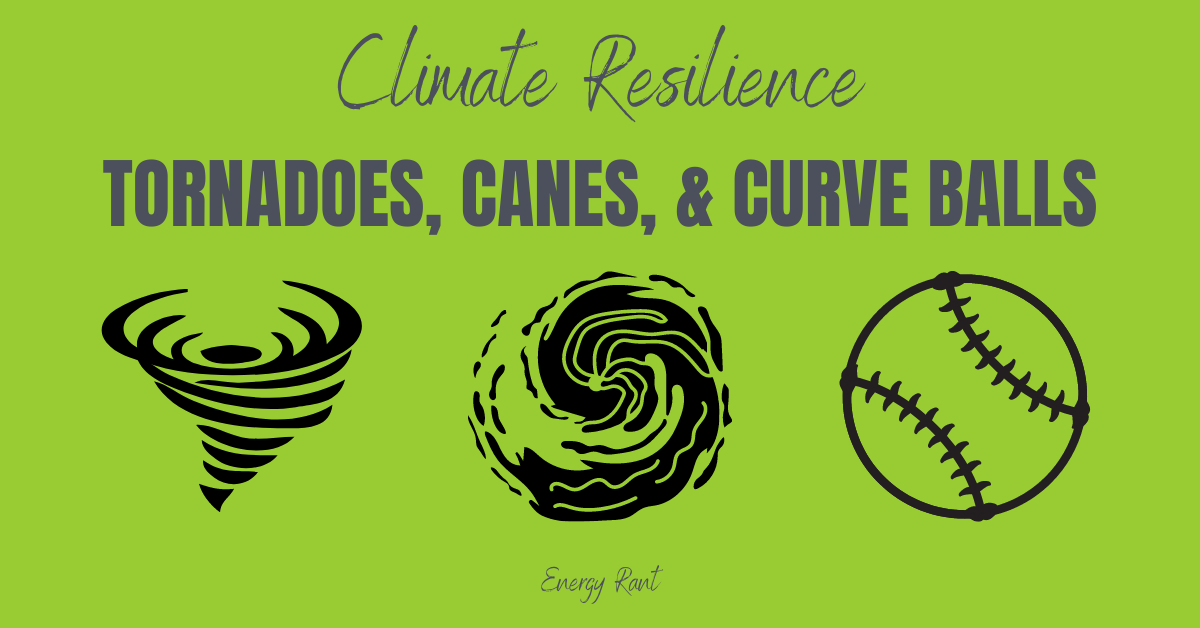
This week we continue responding to the reader question, “What kind of home can withstand fire, hurricanes, floods, heat domes & polar vortex?”
Before we get into design considerations, let’s look at modes of failure.
From my research, hurricanes and tornadoes function similarly with similar wind speeds. Their difference is size and duration, of course. Let’s look at the scales used for hurricanes[1] (Saffir-Simpson) and tornadoes (Enhanced Fujita).
Tornado and Hurricane Engines
Low-pressure systems, tornadoes, and hurricanes all spin counterclockwise in the northern hemisphere, and they all represent rising air. Rising air results in cloud formation (condensation), and if the air rises high enough, it condenses into larger droplets, and still higher, it may result in hail. Tornadic storms may reach 50,000 feet, where the air temperature is far below zero degrees Fahrenheit.
Condensing water, rain, freezing water, and hail release heat – the opposite of boiling and melting, which requires heat input. As heat is released, the air warms, rises as it sucks more air from below, and – if it rises far enough and the upper mid-level atmosphere is cold enough- it will form a funnel cloud. The temperature difference from ground to sky drives storm power. The ground or sea level temperature must be warm enough to hold enough moisture to make the cyclonic engine run.
Destruction
In my study and mechanical engineering background, it seems there are a couple of ways tornadoes destroy buildings. First, there is the Bernoulli principle. The Bernoulli principle applies to many energy-related systems, as shown in the cartoon below.
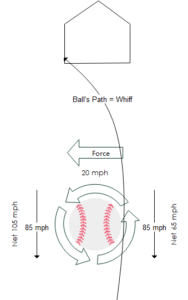 They include pumped hydro storage, gas and steam turbines, pump and fan power, airfoil lift that destroys homes in tornadoes, and of course, curveballs (see below). High-velocity wind over a surface decreases pressure on the outside, creating lift. This will suck shingles off the roof, the roof off the walls, and the ceilings out of the home.
They include pumped hydro storage, gas and steam turbines, pump and fan power, airfoil lift that destroys homes in tornadoes, and of course, curveballs (see below). High-velocity wind over a surface decreases pressure on the outside, creating lift. This will suck shingles off the roof, the roof off the walls, and the ceilings out of the home.
A cartoon of a righthander’s curveball is shown next door. Major leaguers throw with 2400 RPM spin[2], which per my calculations generates 20 mph of spin velocity on the surface of the ball. That velocity is fighting the ground speed of 85 mph on the right side and adding to the 85 mph on the left side. The relative velocity of 105 mph on the left versus the relative velocity of 65 mph on the right creates a “lift” force from right to left as viewed from the pitcher. A right-handed batter may pull back from an apparent headshot to look at a strike or swing at a pitch that’s low and away (fooled).
See my video of a favorite geek trick to demonstrate the power of lift from air velocity.
Bernoulli Destruction
High wind speed doesn’t simply knock houses over like lawn chairs and garbage cans. High wind speed can rip homes apart in a process like shredding meat off a carcass (e.g., pulled pork).
- Step 1 – The roof is sucked off by the principles of the airplane wing (See next cartoon).
- Step 2 – Pressure inside the home is higher than the rapidly falling pressure of the cyclone. The ceilings blow out.
- Step 3 – Now, there is no roof and no ceilings. The exterior walls blow out. The first to blow out is the walls parallel to the wind direction (Bernoulli). The next to go is the one taking the brunt, and it blows in. The last is the leeward side, which gets blown out the back.
- Step 4 – the remaining cards are the interior walls, partitions. They splatter like a house of cards.
Vortex Destruction
Vortex destruction is my theory that the cyclone pulls air from all sides of a structure up to the sky per the powerful engine described above. This produces lift like a vacuum cleaner. My theory is based on whole chunks of buildings, or almost entire buildings being sucked off the ground and deposited somewhere else. Although it’s part of it, it doesn’t seem the airfoil effect alone could do that unless possibly the home is incredibly and solidly built. See the video below for “vortex lift.” Here is a longer edition that includes the video below.
Two images below show how one home is picked up and put down by vortex lift while its neighbor was blown apart by Bernoulli principles described above.
Hurricanes
Hurricanes are slightly different because wind speeds are a bit slower, and the vortex (eye) is much larger. They can rip buildings apart with the Bernoulli principle or damage them with flying debris over a long time. It’s a war of attrition.
The primary danger of hurricanes is flooding caused by rain and storm surges.
Our family vacation for many years was a fishing excursion on Lake of the Woods, which is that sharp blade that sticks out of the top of Minnesota into Ontario. It’s a big lake. One night after a powerful cold front went through, the water level dropped by over a foot as measured at the dock in the bay. Whoa, was my response. That is a storm surge, even on a lake that is tiny compared to an ocean. Winds of hurricane velocity and span, combined with massive rain, and if timed with high tide, can add 10-20 feet of water to the oceanfront in a couple of hours. It isn’t like a flood. It’s moving water, and it takes almost nothing to wipe out any building with moving water. Building on pancake-flat land (“Superstorm Sandy”) just off the shore is begging massive disaster.
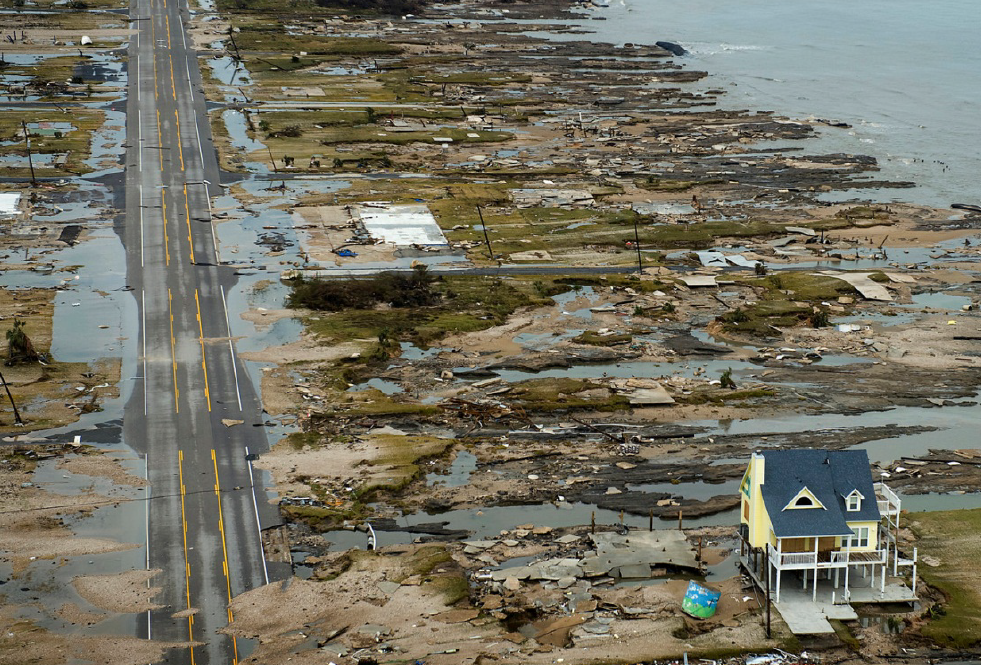 In Western Wisconsin, we have had a lot of flash flooding in the last 15 years. I can tell you that flash floods level things, cover them with sand, and rip out asphalt and slide it over there like you wouldn’t believe – just like the NOAA-sponsored photo above.
In Western Wisconsin, we have had a lot of flash flooding in the last 15 years. I can tell you that flash floods level things, cover them with sand, and rip out asphalt and slide it over there like you wouldn’t believe – just like the NOAA-sponsored photo above.
Next Up
Next week I will report on ways to avoid structural damage, and more importantly, avoid injury or death from these natural disasters.
[1] Hurricanes = cyclones = typhoons, depending on storm location on the globe.
[2] https://rapsodo.com/understanding-rapsodo-pitching-data-spin-rate-efficiency-profile-curveball-slider-changeup/
